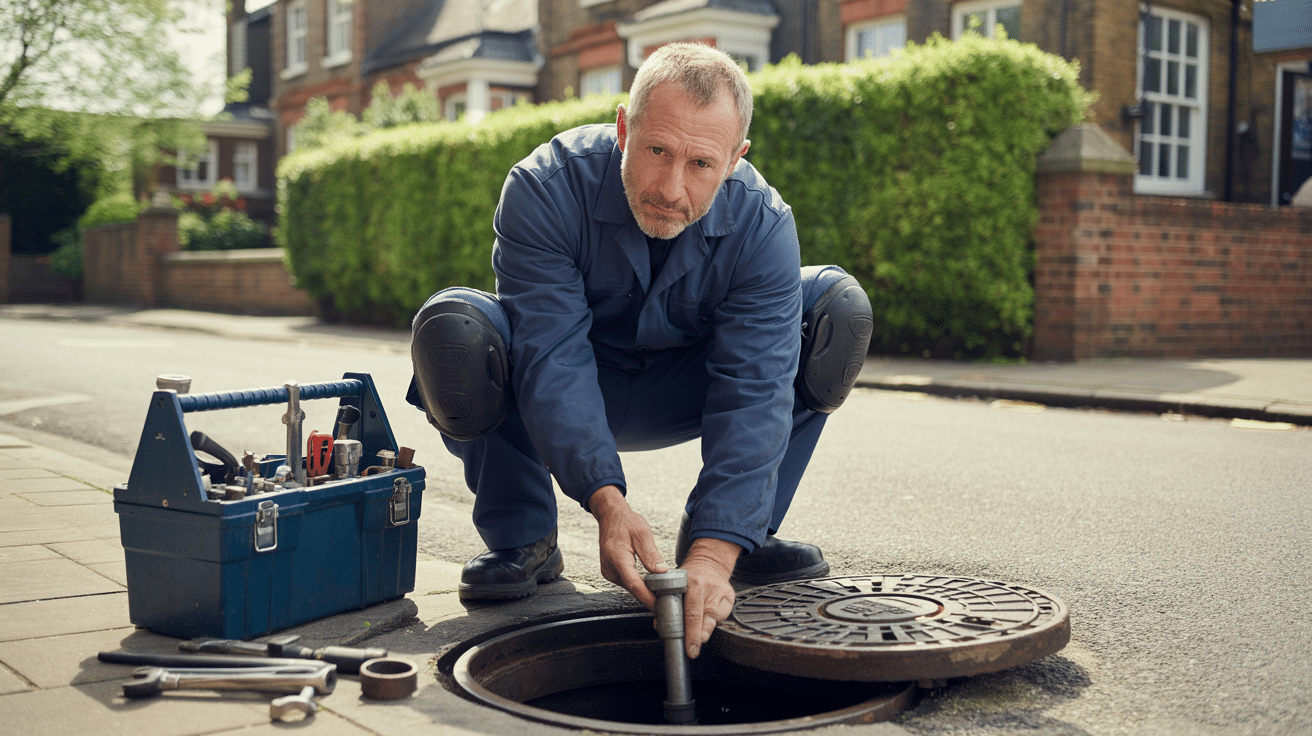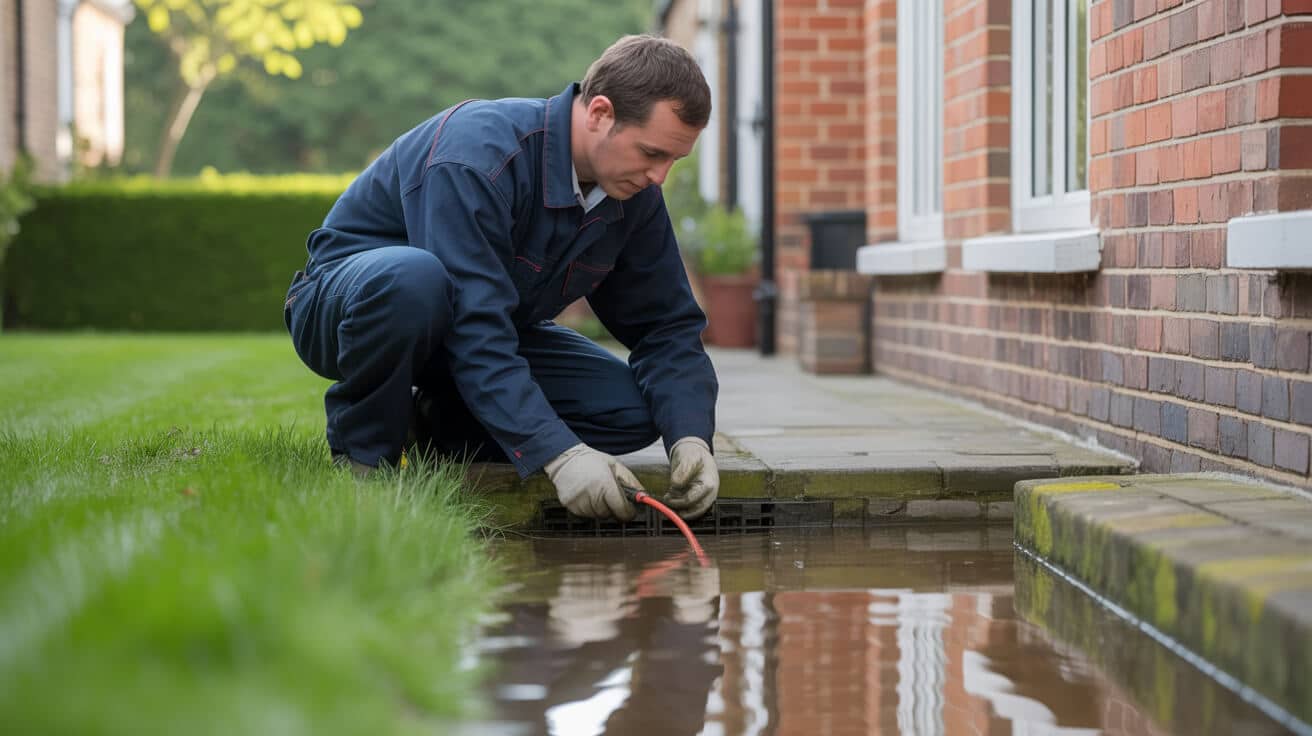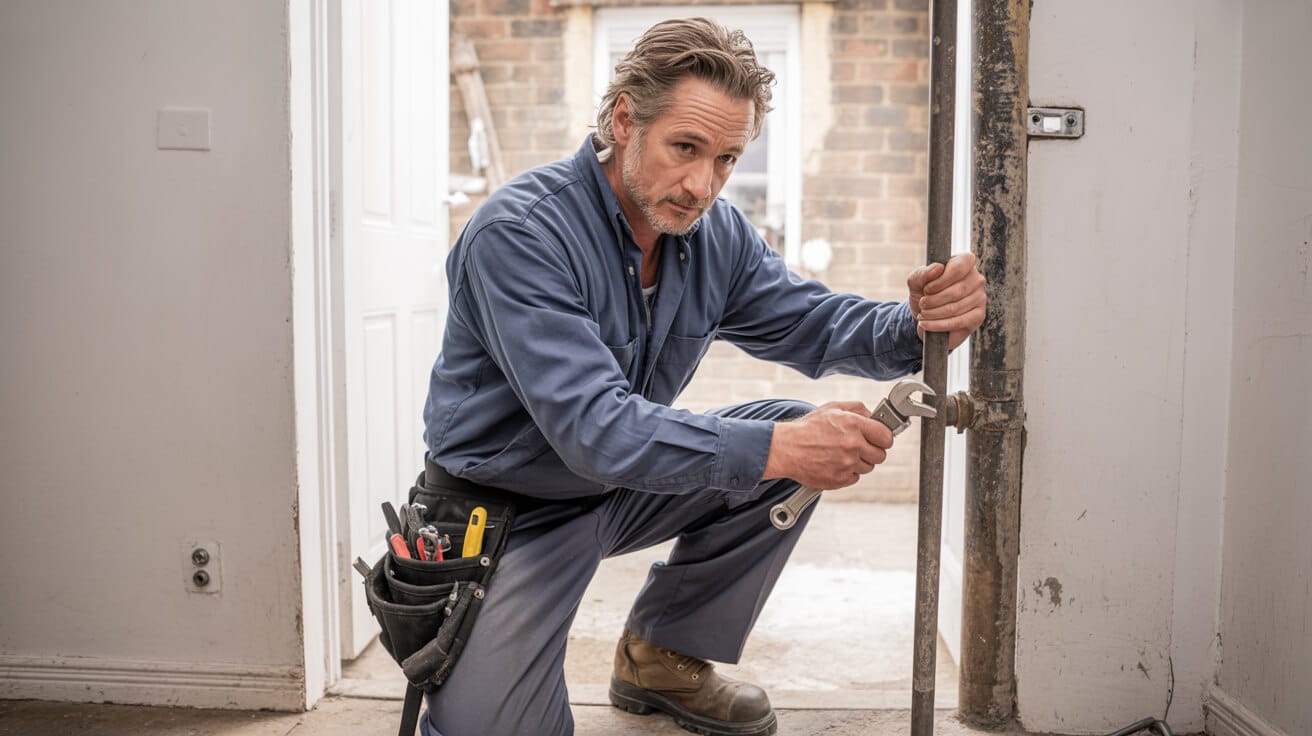 Your Top 10 Questions About Burst Pipes Answered
Your Top 10 Questions About Burst Pipes Answered
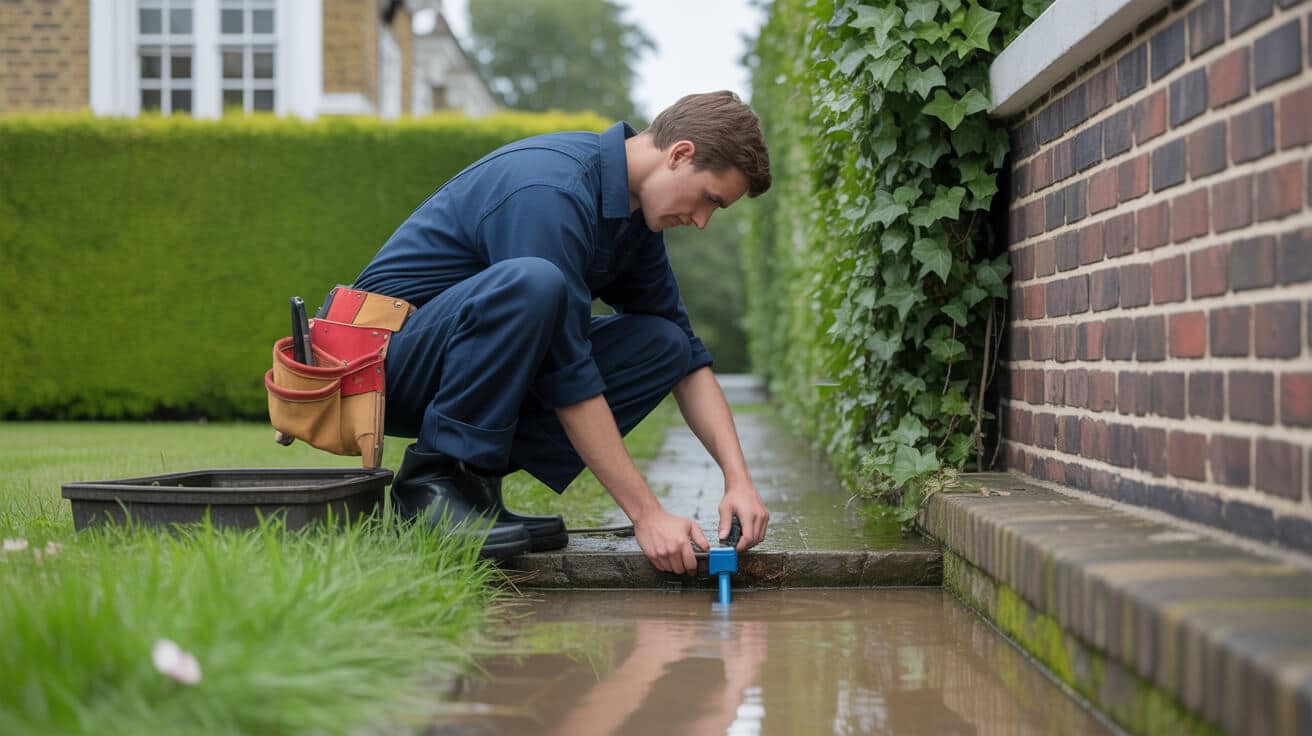
Why Are Burst Pipes So Devastating for UK Properties—and Why Do Even Savvy Owners Miss the Early Signs?
It’s no accident that burst pipes drain profits and spark panic for everyone from hands-on homeowners to commercial facilities managers. While disaster feels sudden, most pipe failures have been brewing quietly—out of sight, behind walls, and under floors. If you’ve ever thought “It seemed fine until yesterday,” you’re not alone. Real-world pipework rarely offers drama—just slow, overlooked warning signs that only become obvious when water’s already on the carpet and you’re calling for emergency help.
The pipes aren’t plotting against you—they’re just quietly asking for more attention than most of us realise.
Most UK property owners underestimate the real complexity of their network. It’s more than copper and plastic; it’s a patchwork of past upgrades, legacy repairs, DIY fixes, and subtle weaknesses created by time and temperature. The main triggers for pipe bursts almost always stack up long before the break:
- Freeze-thaw cycles: catch exposed pipe runs in lofts, garages, and external walls, especially when uninsulated or suffering from gaps at joints or brackets (*BBC Weather, 2024*).
- Pressure instability: caused by malfunctioning pressure valves, abrupt tap closures, or “water hammer” (surges in velocity) which gradually weaken pipe joints.
- Hidden corrosion and fatigue: —inside copper pipes, decades of micro-pitting, or in steel systems, slow rusting, can leave walls eggshell-thin before the final “pop.”
- Installation flaws: —missed pipe clips, forced bends, or too-tight fitting during hurried renovations become rupture points over years.
- Incompatible parts or DIY substitutions: where fittings, adhesives, or repair tape are not WRAS-approved—these fixes simply don’t last once weather turns.
True risk isn’t “old pipes” but a system grown fragile through years of minor oversights, patch jobs, or neglect. The good news? Spotting the vulnerabilities is a skill anyone can learn—and it gives you a real shot at controlling costs, claims, and chaos.
How Do You Spot the Hidden Leaks and Weaknesses—Before a Pipe Actually Bursts?
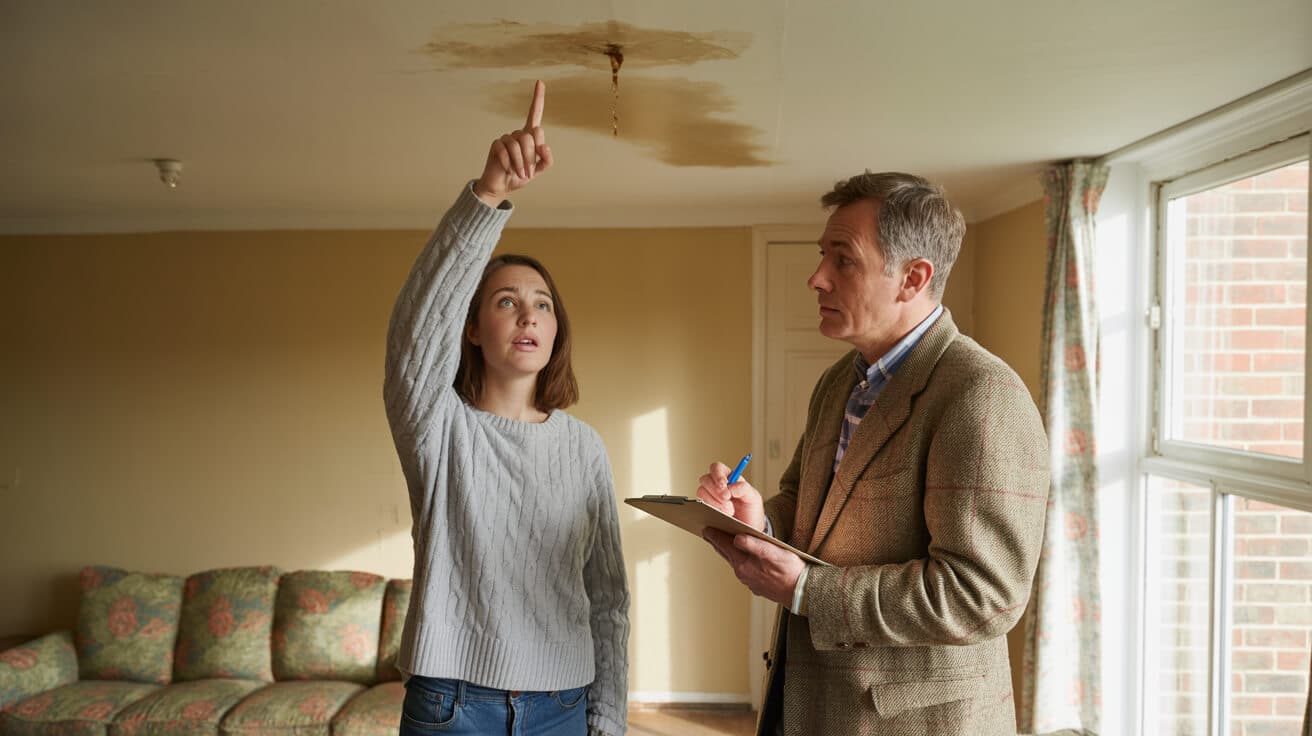
The difference between a slow, manageable leak and a full-blown burst comes down to detection. And most owners miss the mark—not because they aren’t looking, but because warning signs blend into the daily noise of a busy property. Mould on a ceiling, a hissing sound behind a wall, cold spots on a radiator—each is a faint early alert from your plumbing.
Key Early Signals Every Owner Should Notice
- Sudden or intermittent drops in system pressure.: If you’re bleeding radiators regularly or a combi boiler keeps “needing a top-up,” water is escaping somewhere.
- Water stains or tide marks.: Discoloured spots on ceilings, skirting, or around floor edges—especially beneath bathrooms, tanks, or appliances—signal hidden tracking.
- Pooling or persistent damp.: A patch of wet carpet, a drip inside an airing cupboard, unexplained damp near boilers—none are “just condensation.”
- Audible cues.: Running or hissing sounds when all taps are shut mean water is escaping, likely from a pinhole or hidden joint.
- Slow hot water delivery: or intermittent heating—often the result of water escaping from a sealed system.
Damp is a whisper, not a klaxon. Miss that, and you’ll pay dearly for the silence.
Early action saves money. Delayed leaks breed rot, electrical faults, and mounting repair work. If something in your property feels off—don’t rationalise it away. Confirm, isolate, and schedule an expert check. Proactive attention almost always costs less than emergency bailouts.
When Pipes Do Burst, What Should You Actually Do—And Which Missteps Cost the Most?
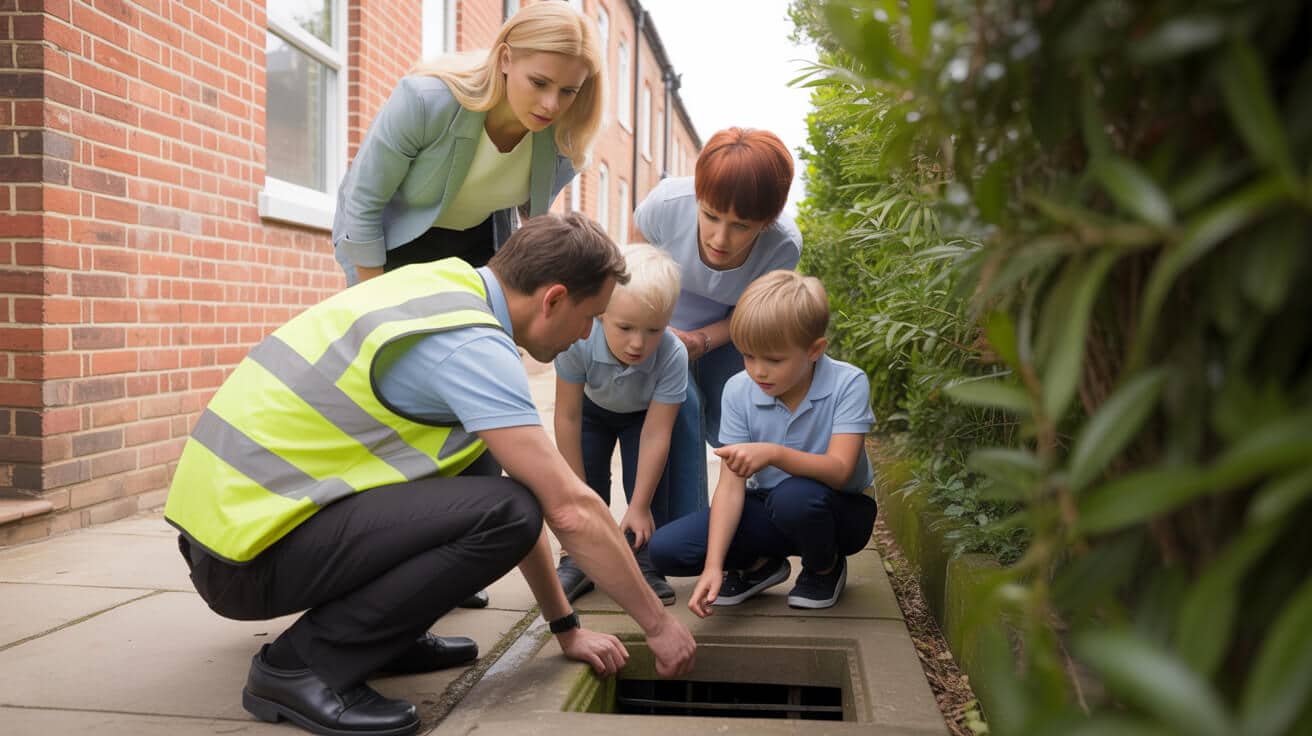
No one plans for a ceiling to collapse or carpets to saturate, yet your first five minutes after a pipe bursts may decide whether you’re looking at a quick fix or a months-long nightmare. Too many owners reach for a mop, panic, or start amateur repairs—only to invalidate insurance, risk safety, or make matters worse.
The “Calm Under Pressure” Emergency Routine
- Isolate the water supply. Know where your main stopcock is—usually under the sink or stairs, sometimes in an external box. Shutting this quickly can halve the scale of damage.
- Power off if needed. If water is heading for plugs, appliances, or circuit boards, kill the electricity at the main fuse box before stepping into standing water.
- Open cold taps low in the property. This drains remaining water in the system, easing pressure on any compromised pipe.
- Contain the damage. Use towels, buckets, bowls to absorb and intercept water—especially where flow threatens floors, stairs, or furnishings.
- Document everything. Snap photos of every patch, stain, and bulge (with time stamps if possible). Clear documentation is your insurance safety net.
In a crisis, nervous hands do more harm than good. Calm, clear steps protect your property and your claim.
Above all: avoid makeshift fixes under stress. Taping, clamping, or plugging an active high-pressure leak can fail far more violently—and if you guess wrong on what type of system (especially unvented cylinders or sealed central heating), you can create safety risks or blow warranty protection altogether. When in doubt: contain and call.
Is Emergency DIY Ever Safe with Burst Pipes—Or Is Professional Support Now Essential?
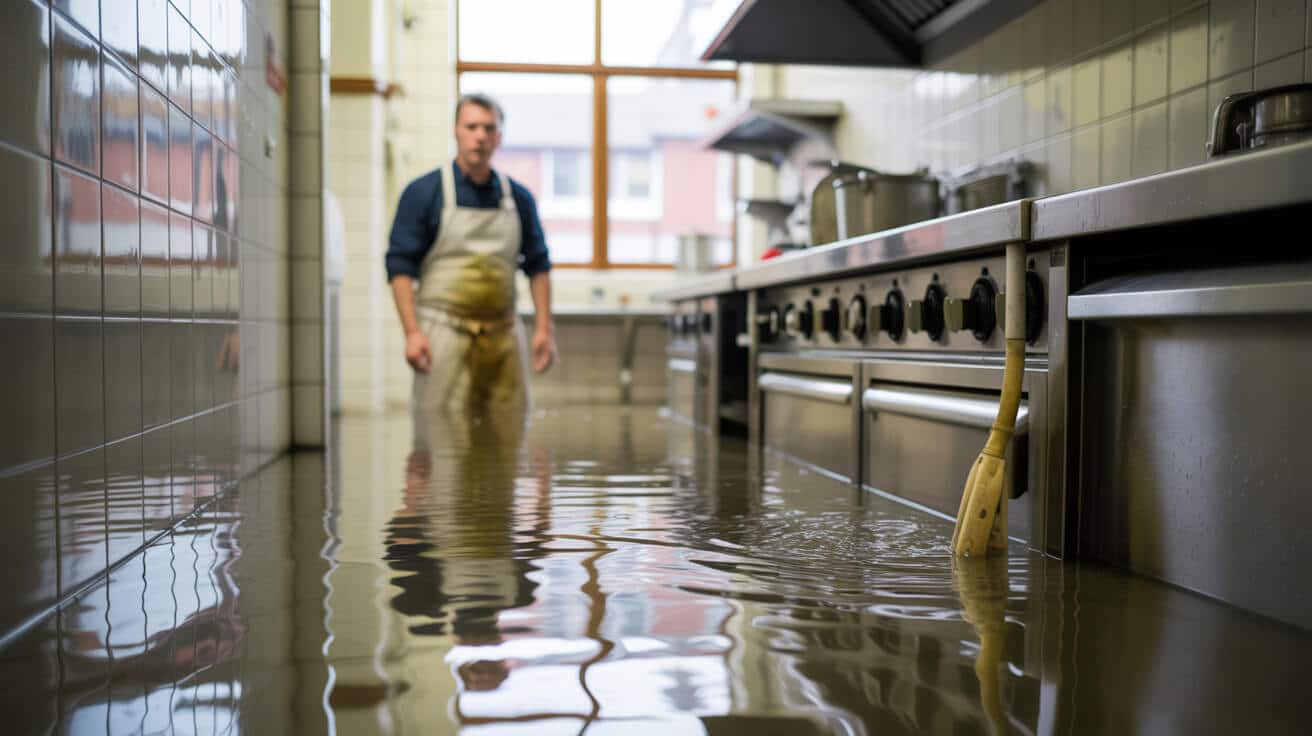
The temptation to “sort it yourself” is real, especially late at night or during busy periods when getting help feels uncertain. But plumbing isn’t plug-and-play. UK regulations explicitly set boundaries on what’s safe, permissible, or covered for non-certified repair attempts.
What You Can Safely Handle as a Layperson
- Temporary clamps or waterproof tape: on accessible, isolated cold mains lines. Always test your isolation—if flow continues at other taps, you haven’t shut down fully yet.
- Basic containment: (bucket under a drip, switching off at the stopcock, mopping up visible water) until a qualified engineer arrives.
When You Must Call a Certified Pro Immediately
- If any leak is hidden, hot, or under pressure: —especially under floors or behind walls, or involving heating/hot water systems.
- In commercial, rental, or communal properties: Compliance for repairs is strict. G3 certification is non-negotiable on unvented cylinders; Gas Safe is essential for anything touching a boiler.
- Where insurance, warranty, or resale value matter: Documented, certified, WRAS/G3/Gas Safe-attested repairs are the only thing that “counts” in a claim or a survey.
DIY has its moments, but water damage isn’t one of them. When in doubt—contain, photograph, and step back.
Temporary patches only ever buy time; never treat them as a “fix.” True security comes from certified engineers documenting every step, leaving you legally and financially protected for the long term.
Do Typical Home or Business Insurance Policies Actually Cover Burst Pipes—or Are There Hidden Gaps?
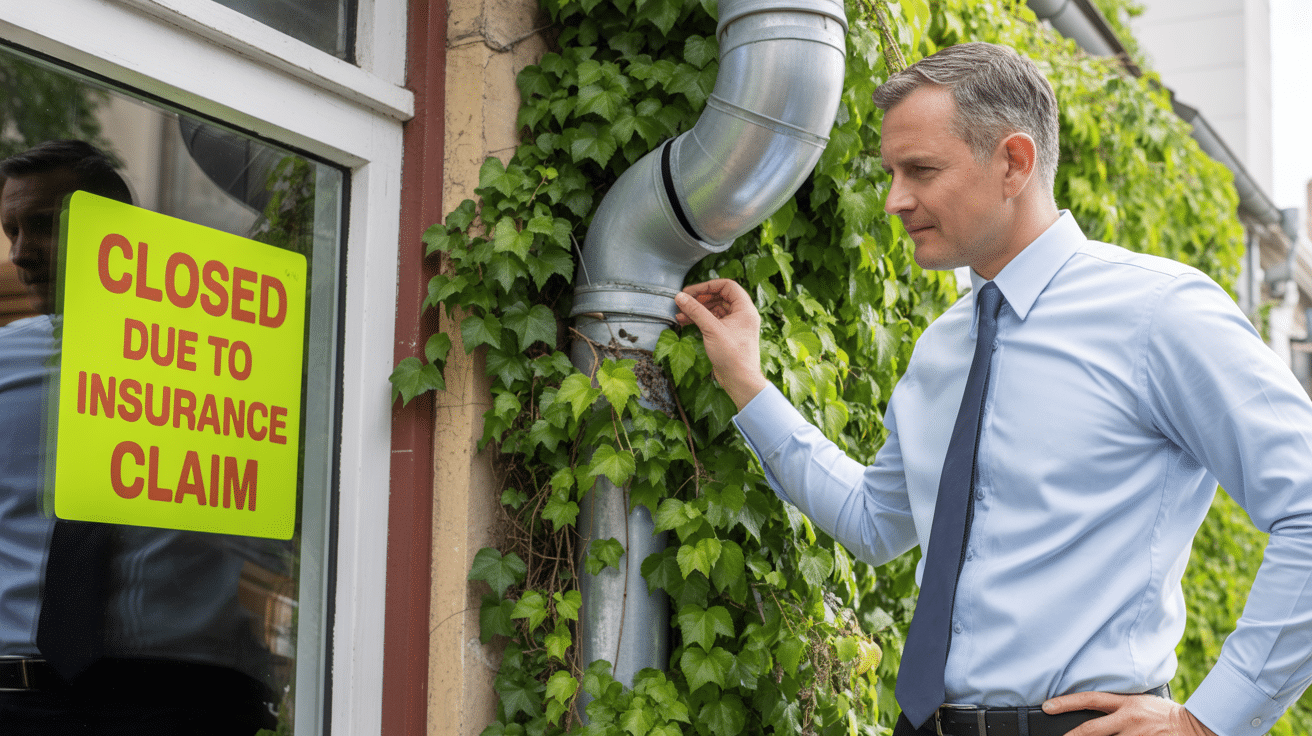
Almost every landlord, owner, and agent assumes their buildings policy is a get-out-of-gaol-free-card. Sadly, insurance folklore collapses under scrutiny—especially when claims are denied for paperwork gaps, missed maintenance, or legal blunders.
The Real Insurance Landscape
- Proof and paperwork trump good intentions.: Most policies demand photographic evidence, time-stamped logs, and a certified, named invoice with regulatory numbers—WRAS, G3, or Gas Safe.
- Trace & Access terms often catch owners cold.: Many policies exclude “finding the leak,” only paying for remedy once the source is found. *If your policy lacks “trace and access,” budget for extra costs.*
- Neglect is a claim-killer.: If you ignored slowly growing damp for months, insurers may refuse on “lack of due diligence.”
- Compliance is more than a buzzword.: Any work on unvented or gas systems, or repairs inside the landlord, business, or public property frameworks, *must* be certified. Miss this and claims stall indefinitely (Aviva, 2021).
A missing G3 certificate can cost you more than the leak itself—insurance only pays when the paperwork is watertight.
Pro tip: Notify your insurer as soon as you spot trouble. Keep every engineer’s certification document and repair log; it’s your shield if a loss adjuster comes knocking.
Pipe Protection That Actually Works in the UK—And Why Quick-Fix Folklore Fails
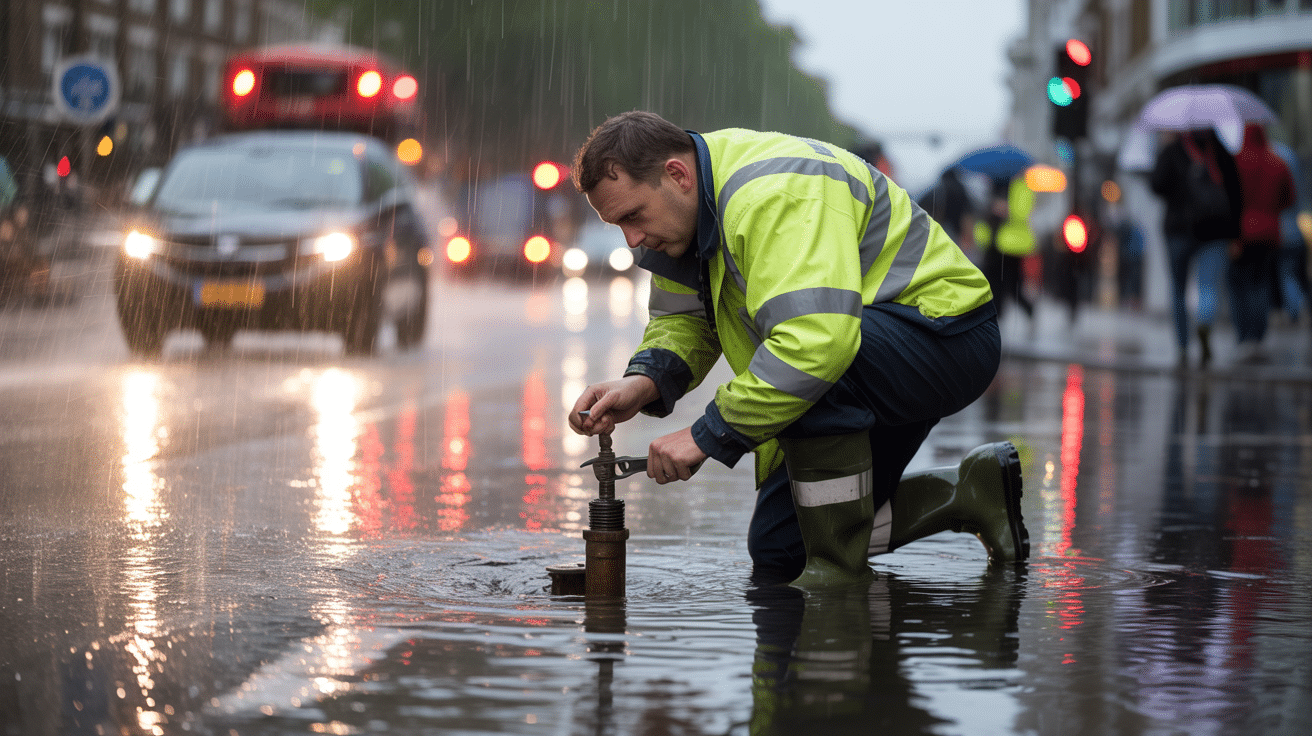
Lasting protection comes from a joined-up system—not a roll of tape, wishful thinking, or layering “borrowed” lagging. It’s simple: insulation works, but only when installed to standards and complemented by good practice.
Reliable Burst Pipe Prevention Steps
- Professional lagging for every vulnerable run.: Use WRAS-approved foam insulation, correctly sized and sealed—especially in lofts, garages, metre cupboards, and northern-facing outside walls.
- Regular draught-proofing and site checks.: Ensure all roof, wall, and cable penetrations are sealed up—gaps let freezing air in, lagging won’t cope.
- Maintain heating at 12–14°C minimum.: Especially in vacancies, holidays, or for landlords managing multiple units, this single step averts dozens of disasters annually.
- Smart monitoring makes your life easier.: Fit leak sensors, pressure alarms, and smart shutoffs—even budget versions can spot a problem before you sense the damp.
- Strategic trickle-flow during freezes.: In truly cold spells, running a slow drip at extreme-risk points can help prevent overnight freezing.
Pipe disasters don’t come from bad luck, but from systems left unguarded and unchecked.
Shortcuts are rarely shortcuts. If you’re tempted to “just tape it for now,” pause and consider: It’s rarely the frost that costs—it’s unaddressed weak points.
What Traps Turn a Manageable Emergency into Total Mayhem—and How Can You Avoid Them?
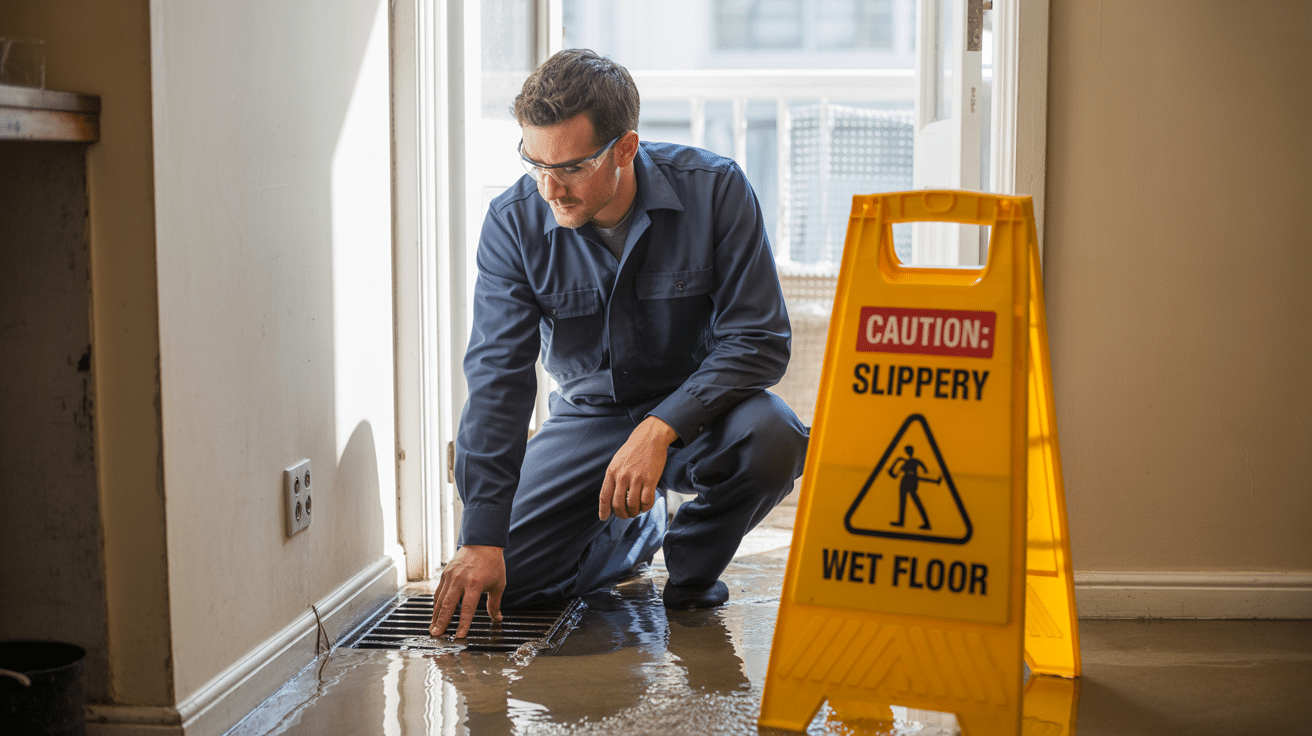
Plumbing madness isn’t about fate—it’s usually about avoidable second mistakes made in crisis mode. Even level-headed property pros put themselves at unnecessary risk or inflate the scale of loss by overreacting.
- Heating or open flame to thaw pipes?: You risk bursts, fire, and property-wide electrical trips—not to mention safety hazards.
- Trying to open a bulging ceiling?: Water volume turns a small bulge into a waterfall; let pros safely puncture and drain if needed.
- Messing with electrics after leaks?: Always wait for a certified electrician if water entered sockets, boards, or switchgear—it only takes one misstep for a shock or worse.
- Breaking through walls for hidden leaks?: Modern detection (thermal imaging, acoustic, tracer dye) makes it rare to ever “go in blind.” Call for diagnostics—save your décor and sanity.
- Reusing failed or worn parts?: Every failed connector or “repaired” valve should be replaced with a new, WRAS-marked component. Repeating old mistakes just hides the next disaster.
Solve the first problem, don’t create three more. Calm expertise trumps impulse every time.
Show restraint, commit to proper fixes, and the bill—plus the stress—shrinks drastically.
What Does a Real Burst Pipe Response from Plumbers 4U Look Like—and How Is It Different?
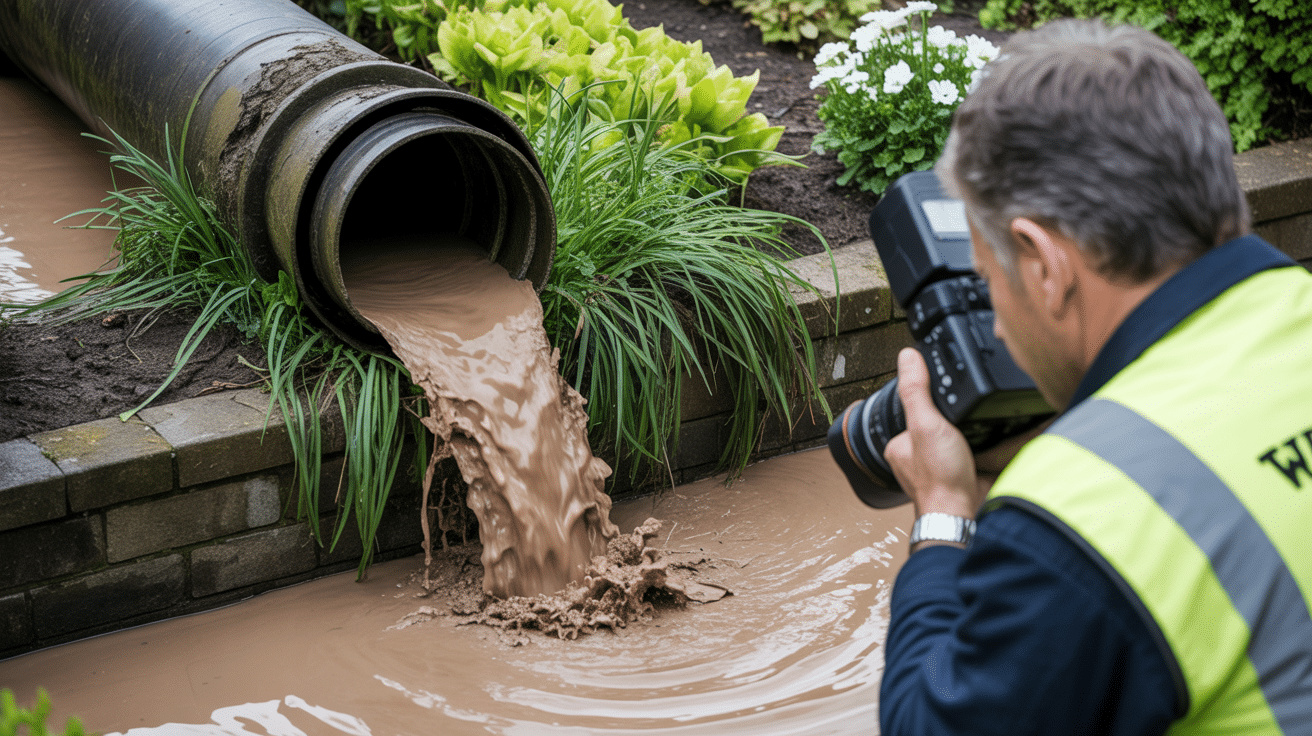
When crisis strikes, your outcome is only as strong as the team on site. The Plumbers 4U difference is more than just speed—it’s in decisive execution, compliance, and continuous ownership of the outcome.
- 24/7 expert phone advice.: Clients reach trained staff immediately; you’re guided step-by-step through safe isolation and emergency control.
- Certified, uniformed engineers on every call.: Every visit is WRAS/WaterSafe/CSCS/G3-compliant—no “trainees sent solo,” ever.
- On arrival, immediate risk control.: Systems are checked for gas/electric exposure, PPE is donned, and safety comes first—for client and property.
- Repairs are fixes, not patches.: Burst sections are cut out and properly pressure-tested. No “it’ll do for now” solutions.
- Compliant paperwork and full documentation.: Invoices detail accreditations, actions, and serials; before/after photos are logged and shared; certificates issued as needed for future claims, sales, or audits.
- Education and ongoing care.: Engineered handovers always include walk-throughs for prevention, FAQs, and proactive support scheduling for the future.
Good trades fix leaks. Great ones defend your next claim—and show you how to avoid needing them at all.
Your technician leaves only when your water is live, your paperwork is complete, and your next step feels obvious—not fuzzy.
Why Does Documentation Matter So Much—and Which Certificates Make All the Difference?
From missed insurance to voided warranties, paperwork isn’t admin—it’s armour. Today’s compliance-obsessed property world rewards owners who treat plumbing docs like gold.
- Detailed, itemised invoices.: Every action and part, with legal references—so buyers, insurers, or managing agents know exactly what’s what.
- Certification for regulated works.: G3 for unvented, WRAS for fixtures, Gas Safe/CP12 for boiler or gas-related fixes.
- Visual evidence bank.: Photos before, during, and after—not just for claims but for tracking “creep” if issues repeat.
- Test results, if applicable.: Pressure tests, flow/temperature logs, and digital diagnostics where relevant.
- Engineer’s written summary.: Problem identified, solution implemented, risks explained, preventive steps listed.
If it isn’t documented and certified, it might as well never have happened—at least to insurers, buyers, or auditors.
Establishing a well-kept archive blesses you with swifter claims, greater resale value, and smoother property audits—paying off in peace just when you need it.
Beyond Pipe Lagging—How Can You Deliver Long-Term Resilience and Peace of Mind in Your Property?
Lasting property protection means playing offence, not just defence. The best-run portfolios—private, rental, or commercial—treat annual plumbing audits like MOTs for their buildings.
- Annual or semi-annual audits catch issues before they’re emergencies.: Catching a corroded joint or insulation gap in spring is worth hundreds in a January freeze.
- Don’t let legacy instal errors linger.: If major sections date before modern standards, plan for repipe/upgrades as part of every significant renovation.
- Integrate technology.: smart thermostats, leak detectors, and app-integrated monitoring help agents, landlords, and busy owners keep tabs—especially across multiple assets.
- Stay current on compliance.: Keep all certs and logs (G3, WRAS, CP12) up to date and digitised; this is your evidence in every inspection, dispute, or property sale.
- Build a relationship with a compliance-first team.: Retainers or scheduled maintenance plans with firms like Plumbers 4U give you faster response, system memory, and candid advice grounded in your unique environment.
It’s the team that thinks ahead, logs everything, and plans upgrades, that keeps you dry and stress-free—year after year.
By shifting from “wait for trouble” to “bulletproof systems,” you secure your building’s reputation, compliance, market value, and peace of mind—today and for years ahead.
Take Control—Partner with Plumbers 4U to Safeguard Every Pipe, Property, and Claim
You know the cost of waiting. The properties that weather every freeze, pressure wobble, and future code change don’t rely on luck—they rely on qualified support, robust documentation, and the discipline of prevention-first thinking.
Plumbers 4U partners with homeowners, landlords, commercial managers, and local authorities to turn pipe risk into plumbing resilience. Our WRAS-certified, G3-compliant, and WaterSafe-accredited engineers act fast, document everything, and guide you before, during, and after any burst pipe crisis. With us, you’re not just patching up water damage—you’re investing in fewer surprises, fewer insurance headaches, and a legacy your portfolio deserves.
Step out of firefighting mode. Secure your water, your asset, and your calm—one documented solution at a time.
Frequently Asked Questions
What hidden details make new build and recently refurbished properties vulnerable to burst pipes?
New construction and retrofitted spaces introduce burst pipe blind spots that older homes rarely face. While updated properties promise comfort and energy efficiency, their hidden plumbing can be at even greater risk—especially from breakneck installation schedules and growing reliance on “invisible” tech. Push-fit plastic pipes, increasingly found in loft conversions and modular sections, may skip a lagging run or struggle around awkward corners, leaving critical joints exposed to freezing draughts. Ultra-insulated homes conceal pipes inside cold bridging steel beams or roof voids to maintain sleeper comfort, yet these areas can drop below freezing when a smart stat misfires or property Wi-Fi drops out. Even minor missed insulation, according to the Association of Plumbing & Heating Contractors (APHC), now accounts for 28% of burst claims in recently built or modernised UK properties.
The set and forget comfort of modern controls hides risk—your pipes don’t forgive an overlooked gap or a cold snap during a cloud outage.
Faults often evade notice because open-plan layouts and concealed piping run through unheated voids that maintenance rarely touches. In flats, communal risers with shared supplies face another twist: if no one checks for missing lagging after an engineer accesses a valve, a single building can suffer thousands in rushed winter repairs. Ultimately, the interplay between modular builds, digital controls and insulation continuity means that a smart-enabled, high-spec extension might actually be less tolerant to small oversights than a ’90s copper system that’s seen every freeze.
Key triggers for burst pipes in new or refitted properties
- Site-installed push-fit plastic pipes omitted from after-build lagging audits
- smart controls with unchecked batteries or expired firmware, leaving frost cycles off
- Rerouted pipework through steel/timber cold bridges in super-insulated fabric
- Overlooked gaps at junctions between old and new build materials
- Communal risers with ambiguous maintenance liability, complicating post-incident resolution
A professional annual audit for insulation, control, and vulnerable runs—plus regular manual frost-testing—protects your investment far better than relying on tech or trust in newness alone.
Why do many burst pipe insurance claims fail despite having full building cover?
A burst pipe claim is rarely decided by the event alone—it’s won or lost by the fine print of care, compliance, and documentation weeks or years beforehand. UK insurers—reacting to rising payout costs and regulatory scrutiny—have re-written “escape of water” clauses to demand proof that every common-sense and statutory step was taken to prevent a burst (ABI, 2023). Miss a single link in your routine—lapsed WRAS or G3 certificates, no timestamped proof of annual checks, or an unlogged DIY fix—and the policy could be worthless.
All the cover in the world won’t matter if your audit trail is blank or your certificate expired at the wrong moment.
Every stakeholder in a managed property—from the landlord and letting agent to the tenant—now shares legal risk. Disputes over who should have checked lagging or reported the first issue undermine entire claims. In heritage or listed buildings, “like-for-like” repairs might not meet regulatory or modern compliance standards, leaving owners exposed for supposedly doing the “sympathetic” thing. Zurich’s 2023 claims data shows lost payout most often stems from missing evidence, slow incident notification, or overlapping repair responsibilities.
Table: Most common burst pipe claim failures and how to prevent them
| Claim Failure | Real-World Example | Preventive Step |
|---|---|---|
| No up-to-date certificate | Missed WRAS renewal invalidates repair | Track expiry, renew annually |
| Gaps in service log | DIY fix unrecorded, insurer declines claim | Only pro engineer, full log |
| Delayed notification | Burst reported after the weekend | Immediate same-day alert |
| Split liability dispute | Landlord/agent fails to clarify lunch duty | Assign/record roles upfront |
| “Sympathetic” but non-compliant repair | Old building, workaround not certified | Use G3/WRAS specialists every job |
Having a plumber who delivers digital logs, photo-evidence, and WRAS/G3 paperwork after every job is now a game-changer, converting claims from at-risk to ironclad.
Where does tech-driven burst pipe protection go wrong, even with everything installed?
Smart water detection and auto shut-off kit is everywhere—yet burst pipe claims driven by “tech miss” are steadily rising due to subtle, overlooked gaps. Even the cleverest sensor loses power, misses a battery swap, or drops offline when Wi-Fi is patchy. App-controlled thermostats only protect if frost cycles remain active, and notifications aren’t muted or lost in a spam folder. Plumbers 4U have rescued many homes where the “smart” system worked in theory but failed on the day: backup supply off, firmware not updated, no one double-checked sensor status during a holiday.
Technology is a multiplier—it makes a good system safer, but can scale human neglect into a digital blind spot with real consequences.
Some insurance deals offer discounts for approved leak detection or freeze alert gear—so long as a maintenance and logbook system proves they’re checked every month. Battery back-up plans, oversight for shadowed outbuildings or risers, and regular hands-on drills (every family or team member knows the stopcock and manual override routine) are just as important as embracing tech.
Practical limits and drills for smart burst pipe protection
- Check all sensor batteries and wireless links every quarter—add to maintenance calendar
- Place at-risk zone sensors in every unheated riser, attic, or garage; never trust only high-traffic rooms
- Confirm all control firmware is on current version, and app notifications are set to loud/priority mode
- Keep stopcock locations and manual isolation plans visible, not “just on the app”
- Log every check, update, and drill; use photo or app screen grab as proof for insurers
Smart kit is only as strong as your culture of maintenance—your best investment is in routines supported by tech, not replaced by it.
How do landlords and managing agents future-proof against burst pipes and shifting regulations?
Regulatory risk and burst pipe fallout is shooting up the property manager’s agenda in 2024, thanks to new energy and safety laws, tighter insurance thresholds, and a digital-by-default compliance climate. Winning portfolios have moved beyond “send a plumber if wet” to adopting repeatable, cloud-backed audits and a systematic log for every remedial or proactive action. letting agents are leading the charge by digitising WRAS, G3 and Gas Safe certification, flagging expiry dates a month in advance, and standardising maintenance flows across all properties—no exceptions for single tenants versus full blocks.
If your compliance files don’t live in the cloud—and if your sensor, certificate, and repair logs aren’t accessible by all stakeholders—you’re building risk, not resilience.
Annual insulation and leak sensor checks, always scheduled after a void or before a cold snap, are the new normal. Digital storage of all paperwork and before/after repair media now forms the “proof pack” for every claim, end-of-tenancy settlement, or asset sale. Pro collab between agents, engineers, and even tenants (with winter “system ready” alerts) have slashed leakage downtime by a third in managed buildings, transforming stress into a demonstration of best practice ownership.
Property manager’s futureproofing checklist (2024+)
- Calendar-triggered insulation and leak sensor audits at every address
- Cloud storage for every cert, invoice, and compliance repair log—property by property
- Pre-winter “system ready” checks for all tenants and site managers — with photo proof
- Only WRAS/G3/Gas Safe-accredited engineers for all repairs and upgrades
- Documented end-of-tenancy pipe inspections with timestamped media
Digitising workflows and setting “compliance by default” turns insurers and local authorities into allies, not adversaries, and builds a property reputation that endures.
What overlooked impacts can a burst pipe have beyond immediate repair costs?
Burst pipes sneak in ripple costs that too few owners, landlords, or facility leaders account for when balancing risk and budget across properties. Beyond soaked carpets and builder quotes, reputational blowback, compliance fines, rent interruption, and valuation shock often dwarf the fix itself. For commercial, rental, or shared living sites, water shutdown or flooding can cost days of lost revenue—sometimes triggering penalty clauses with tenants or brand-damaging Google reviews. A digital heating or alarm system may lose data, or even void warranty if cables or sensors are flooded unnoticed.
Every hour spent recovering from a burst is a hidden cost—future claims, premium hikes, and lost trust add up years later.
A single missed certificate or a poorly documented repair leads many insurers to spike excess or even blacklist a managed property for repeat failure. Surveyors now flag lingering damp and “compliance audit gaps” as red marks in valuation reports; the Buy‑to‑Let and Sale markets are quickest to penalise signs of unresolved or “flipped” water damage histories.
Longer-term losses after a burst pipe incident
- Lost commercial or rental revenue during repairs, and for re-letting delays
- Mould/legionella liability, with Health & Safety Executive fines if hazards persist
- Unplanned insurance excess or annual premium surges, spread across a portfolio
- Asset devaluation from negative survey/reports, especially in the sales process
- IT or home-tech downtime due to undetected water ingress or sensor/cabling faults
Treat the incident as a leadership moment—demonstrate full recovery and build-in risk reduction. That’s what increases both asset value and trust with insurers and future buyers.
Which step-by-step approach guarantees a burst pipe repair is legal, safe, and futureproof for claims?
Getting a burst pipe sorted quickly and to code demands precision at every step. First, isolate supply at the main stopcock—then confirm all downstream branches fully drain (from kitchen to top-floor WC). If there’s any risk to electrics, power down affected zones immediately, before moving or touching damaged materials. Snap photos with time, date, and wide context (not just the leak) before the fix starts. Next, engage only WRAS/G3/Gas Safe-registered plumbers—never attempt a regulated repair or alteration yourself, no matter the urgency.
Documentation isn’t just paperwork—it’s your shield for the next claim, audit, or property sale.
Your engineer will trace the breach, verify material and insulation state, and carry out an urgent containment or compliant replacement according to water regs and manufacturer guidance. Digital and paper compliance records (with part numbers, certificates, log entries) should accompany every repair. For managed, communal, or high-value properties, notify your insurer and facility manager promptly, recording all actions. Aftercare matters: follow up with a written maintenance and lagging schedule, and set reminders for next year’s check.
Stepwise burst pipe recovery and legal compliance
- Isolate water at stopcock, drain branches; power off any zone at electrical risk
- Document the scene—photos, times, and notes
- Contact accredited plumbers only; keep details for insurance
- Log every step—repair actions, certificates, photos, invoices—in cloud files
- Update and share maintenance schedule; log preventive advice acted upon
- Request aftercare check and next-year compliance reminder from your plumber
Choosing a service like Plumbers 4U ensures each incident not only gets fixed but leaves you armed with every certificate, log, and digital file you’ll ever need—demonstrating due diligence, maximising your claim readiness, and lifting your property’s resilience for years ahead.

